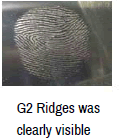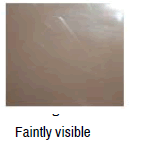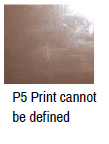Research Article - (2024) Volume 15, Issue 5
Received: 24-Jan-2020, Manuscript No. JFR-20-6698;
Editor assigned: 29-Jan-2020, Pre QC No. P-6698;
Reviewed: 12-Feb-2020, QC No. Q-6698;
Revised: 20-Jul-2022, Manuscript No. R-6698;
Published:
17-Aug-2022
, DOI: 10.37421/2157-7145.2024.15.505
, QI Number: Q-6698
Citation: Singh, Priya . "Sensitivity Determination of
Cyanoacrylate Method for the Development of Latent Fingerprint on Glass
and Plastic Surface at Different Time Interval". J Forensic Res 13
(2022): 505.
Copyright: © 2022 Priya Singh, This is an open-access article distributed under the terms of the creative commons attribution license which permits unrestricted
use, distribution and reproduction in any medium, provided the original author and source are credited.
Fingerprints have been the constant since the birth of mankind. The cyanoacrylate fuming method, also referred to as the super glue method, is proven to be the most effective tool used by investigators to develop latent fingerprint on non-porous surface such as glass and plastic. This method uses the vapors of superglue to develop latent fingerprints. The method relies on the deposition of polymerized cyanoacrylate ester on residues of latent fingerprints. This method develops clear, stable, white colored fingerprints on glass surface till upto 5th week whereas on plastic surface it was upto 4th week when observed under the temperature ranges between 12?-25? at different time interval.
Fingerprint latent fingerprints • Cyanoacrylate fuming • Superglue • Non-porous
One of the major goals of the criminals and civil investigation progresses is to be able to identify people, specially victim and suspects but also the owner of various objects and the authors of relevant documents. Fingerprint matching is one of the best known and accepted method of personal identification. The palmer surface of the hands are covered by a layer of corrugated skin to ensure a firmer grip and to resist slippage [1]. These elevation on the palmer surfaces are known as friction ridges and the valleys formed between two ridges are known as furrows or grooves. The science of ridge analysis for the examination of fingerprint is called as ridgeology and the science of comparison of friction ridge structures such as fingerprint is referred to as dactyloscopy.
The friction ridges are dotted with pore openings which discharge perspiration whose composition is mainly water, the other material as sodium chloride, organic acids urea and albumin in an extremely small amounts (or traces) [2].
Fingerprint is an impression which is left by the friction ridges of human finger. Fingerprint evidence plays an important role for personal identification and it can certainly be ensured if the two fingerprints belongs to the individual in question. Identification of fingerprints is carried out by definite pattern. But the patterns alone do not contribute to it. The pattern and the ridge characteristics or minutiae together are responsible for establishment of fingerprint identification [3].
Fingerprints are the traces of an impression from the friction ridges of any part of a human or other primate hand. A print from the sole of the foot can also leave an impression of friction ridges. Since Culprits while entering at the crime scene occurrence always touch or handle some of the object, is bound to leave unconsciously many of his fingerprints over there. This type of fingerprints left by the culprit at the crime scenes are called as “chance prints”. Sometimes a glass or a plastic bottle is picked up by a person with his hand to be placed in another place or position. The superglue technique is an excellent means of developing latent fingerprints. It stands as one of the best methods of obtaining one of the most important type of physical evidence. It can be adopted as a primary method of developing latent fingerprints. Superglue reacts with the traces of amino acids, fatty acids and proteins in the latent fingerprint and the moisture in the air to produce a visible, sticky white material that forms along the ridges of the fingerprint. The final result is an image of the entire latent fingerprint [4].
Fingerprint deposition 7 glass plates and 7 plastic surfaces were used for the determination of sensitivity of cyanoacrylate fuming method. The study was conducted in air temperature ranges from 12°C-25°C. Each non porous surface was cleaned by alcohol swabs to make sure no unintentional prints were deposited. Informed consent from fingerprint donors was taken. The fingerprint donors were informed not to wash their hands before the experiment. They were asked to rub their fingertip against the forehead and around the nose (groomed/sebum rich fingerprint), then press their fingers in rolling motion against the surface [5].
Fingers of donors were applied to the surface by me to ensure that fingertip area sampled, time of contact and pressure were as consistent as possible between donors. Groomed fingerprints were deposited in depletion series on each surface. The intention was to initially deposit good quality fingerprints onto the substrate and where possible, oblique lighting was used to confirm that the quality and clarity of those recently deposited fingerprints were identifiable. The deposited prints were labeled using permanent marker.
7 surfaces (of each material) were placed in air tight container to prevent from dust. Glass samples were labeled as G1, G2, G3, G4, G5, G6, G7 and plastic samples were labeled as P1, P2 ,P3, P4, P5 ,P5 ,P6, P7. During the deposition of finger mark the contact time was between 3-5 seconds. Different methods have been reported for the processing of developing latent fingerprints using [6] cyanoacrylate fuming. Simple homemade system consisting of a chamber, such as a glass aquarium, can be used to develop cyanoacrylate vapors by suitable heat source like hot plate, heater etc., and fumed the articles bearing latent impression at minimal cost. Articles to be processed are suspended in chamber and small amount of liquid cyanoacrylate is heated to around 80°C to 100°C to produce sufficient vapor. A container of water must also be placed in the tank to provide sufficient humidity for the development of prints. Low humidity causes the appearance of weakly developed prints with poor contrast. Development process should be regularly inspected to avoid over-development. Temperature control, proper vapor circulation and automatic removal of the cyanoacrylate vapor are some of the added advantages of commercial fuming chamber over home-made chamber. Fingerprints examination-The developed latent prints were examined using magnifying glass and photographed (Tables 1 and 2)[7-9].
| S.no | No. of weeks | Developed fingerprint on glass surfaces | Intensity |
|---|---|---|---|
| 1 | 1 |  |
+++++ |
| 2 | 2 |  |
+++++ |
| 3 | 3 |  |
++++ |
| 4 | 4 |  |
++++ |
| 5 | 5 |  |
++++ |
| 6 | 6 |  |
+++ |
| 7 | 7 |  |
++ |
| s.no | No. of weeks | Developed fingerprint on plastic surfaces | Intensity |
|---|---|---|---|
| 1 | 1 |  |
+++++ |
| 2 | 2 |  |
++++ |
| 3 | 3 |  |
++++ |
| 4 | 4 |  |
++++ |
| 5 | 5 |  |
+++ |
| 6 | 6 |  |
+++ |
| 7 | 7 |  |
++ |
Note: +++++ indicates very good visibility with score 5, ++++ indicates good visibility with score 4, +++ indicates poor visibility with score 3, ++ indicates bad visibility with score 2, + indicates blur/no print visibility with score 1.
The glass surfaces were used as a sample and the fingerprint was developed over the surface by using cyanoacrylate fuming method. Ridges were clearly visible in G1and G2, faintly visible in G3, G4 and G5, only print was visible in G6 and G7. Cyanoacrylate fuming method gives best result on glass surface till up to 5th weeks [10-14].
The plastic strips were used as a sample and the fingerprint was developed over the surface. In cyanoacrylate fuming method for the development of latent fingerprints, ridges were clearly visible in P1 and P2, faintly visible in P3, not clearly visible in P4 and P5 whereas in P6 Print cannot be defined and in print was almost completely smudged [15].
Thyroid nodules are very common and is having increasingly high incidence. FNAC or FNNAC is most often carried out for thyroid nodules. Such investigation not only is invasive but also needs repetition in many patients. Ultrasound is a non-invasive, inexpensive and serve as available alternative to FNNAC. However, before introduction of TIRADS, there was lack of uniformity and reproducibility for thyroid nodules. Use of TIRADS is an effective tool in reducing avoidable invasive procedures. TIRADS classification brings uniformity in reporting and reduces ambiguity in management of the patients. Our study shows high degree of correlation between TIRADS classification and HPE diagnosis. TIRADS can be used an effective tool for avoiding unnecessary invasive procedures.
Journal of Forensic Research received 2328 citations as per Google Scholar report